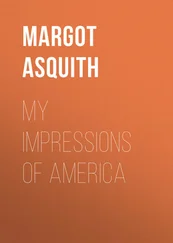The second edition of this book came to be because of the foresight of Polity Press. We would like to thank Jonathan Skerrett for taking the initiative to move forward on updating this text. None of us could have possibly anticipated that its completion and publication would come at a time like this. We also want to thank those who have used the book in professional and/or personal settings, for that has allowed a second edition.
This book is only possible because of a number of colleagues that we have worked with in different capacities over the course of our careers. With a book such as this, there are too many individual scholars to list for special acknowledgment, so we will not even try. In some respects, this entire book is an acknowledgment of the work they have done. We would like to give special recognition to our past and present colleagues at Bucknell University, Oberlin College, the Smithsonian Institution, Tufts University, Rutgers University, the University of California, Davis and Amherst College. We would like to thank our families and close friends for putting up with yet another book project. Their support and enthusiasm around this project have made this all the more worthwhile.
Pawan Dhingra
Robyn Rodriguez
Part I Framing Asian America
Asian Americans are overrepresented among college graduates, with 50% of Asian Americans age 25 and older having gained at least a bachelor’s degree, compared to a quarter of the US population as a whole. 1They are accomplished professionals in fields ranging from the sciences to the arts. They have a high rate of small-business ownership. They are seen as model workers. At the same time, a greater percentage of Asian Americans than non-Hispanic whites live in poverty, and Asian Americans are more likely than the US population overall to be uninsured. 2A range of Asian Americans rely on public welfare programs, work in low-wage and in ethnic enclaves (e.g. Chinatown, Koreatown, Little Saigon), encounter racial stereotypes as foreigners, suffer from untreated mental health illnesses, are undocumented, and/or are victims of hate crimes. 3
Yet, even with all of these variations and contradictions, it is not the multifaceted lives of Asian Americans alone that make them necessary subjects of study. The experiences of Asian Americans speak to more than just this group. Their lives provide insight into a host of broader topics that have been the key focus of academic and popular concern. These topics include how race shapes people’s lives; how immigrants gradually assimilate – or do not – to their surroundings; how war and empire building impact families; how transnationalism influences people’s social and economic opportunities; how small groups come together or engage in conflict; how people self-identify; what leads to academic success and failure; and more. The goal of the book is to shed light on such general sociological questions through the experiences of Asian Americans.
Learning how Asian Americans experience these and other issues, moreover, tells us about the United States as a nation, for the nation is well understood based on how it treats its newcomers and minorities. According to the United States’ self-proclaimed creed as a nation of immigrants, all persons are welcome to make a new life here. But is there true equality in schools, the workplace, media, and elsewhere for all persons, regardless of country of origin, religion, gender, or other social categories? Can the nation become truly multicultural, or will the cultural definition of the United States remain Anglo-Saxon and Christian? What do the hate crimes against Asian Americans in response to the coronavirus reveal about the country? Do immigration laws give immigrants control over their lives upon entering the United States, or do they privilege the interests of others? Does growing economic globalization create more transnational lives? How have racism and colonialism been key parts of American history and contemporary life? In other words, the challenges and opportunities that Asian Americans face inform the true nature of the nation, and these are central issues that this book grapples with.
And of course, the study of Asian Americans matters to Asian Americans and those who are interested in our well-being. A text that centers on the lives of Asian Americans affirms their experiences while also informing the human social condition more broadly.
Asian Americans refers to individuals living in the United States who immigrated from (e.g. first-generation immigrants) or whose ancestors (e.g. second-generation immigrants and beyond) immigrated from Asian countries and Asian diasporas (i.e. settlements in other countries). Asian Americans consist of Bangladeshi, Burmese, Chinese, Cambodian, Filipinx, Hmong, Indian, Indonesian, Japanese, Korean, Nepalese, Pakistani, Sri Lankan, Taiwanese, Thai, and Vietnamese Americans, among others originating from Asia. As discussed in chapter 3, “Arrival and History,” Asians have lived in the United States in large numbers since the 1800s. Historically, scholarship on Asian Americans focused on the largest groups to first immigrate, namely Chinese and Japanese Americans. The descendants of these early immigrants drove the Asian-American movement of the 1960s, which gave rise to Asian American Studies and increased research and writing about the Asian-American experience. The Immigration and Naturalization Act of 1965 altered the demographics of the United States and precipitated a much larger immigration of Asians after decades of anti-Asian immigration policies limited their entry into the country. Asian-American demographics have continued to change since then with continued voluntary immigration and also due to war and imperialism. Southeast Asians have arrived mostly since the 1970s as refugees and as family members sponsored by those refugees.
The number of Asian Americans has been increasing at a quick pace due to both continued immigration and to children born in the United States. According to the 2010 US Census, “The Asian alone population and the Asian alone-or-in-combination population both grew substantially from 2000 to 2010, increasing in size by 43 percent and 46 percent, respectively. These populations grew more than any other race group in 2010.” 4There were over 20 million Asian Americans, not even including multiracial Asian Americans, as of 2017, comprising 6.3% of the US population. As Table 1.1indicates, Asian-American groups range widely in their numbers, with most listed groups (Chinese, Indian, Filipinx, Vietnamese, and Korean) numbering well over a million or even near or over three million individuals each as of 2010.
Table 1.1Asian-American population
Source: US Census Bureau, 2015–2019 American Community Survey 5-Year Estimates and 1-Year Estimates, Table ID B02018; generated by Pawan Dhingra, using American FactFinder
| Group |
Population, 2019 |
| Asian (alone or with other races) |
22,191,093 |
| Chinese |
4,993,935 |
| Asian Indian |
4,318,046 |
| Filipinx |
4,014,408 |
| Vietnamese |
2,086,017 |
| Korean |
1,859,653 |
| Japanese |
1,477,579 |
| Other Asian |
692,723 |
When you think of someone who is Asian American, what do they look like? What countries/ethnicities do they identify with?
Online resources: For updated demographic information on the Asian-American population, including helpful infographics, see AAPI Data, https://aapidata.com/. Another important resource on demographic information on immigration more generally, including the Asian-American population, is the Pew Research Center. The Pew Research Center describes itself as a “nonpartisan fact tank that informs the public about the issues, attitudes and trends shaping the world. We conduct public opinion polling, demographic research, content analysis and other data-driven social science research. We do not take policy positions.” Many academics and media outlets use immigration data generated by the Pew Research Center. It is generally considered a reputable source: https://www.pewresearch.org/topics/asian-americans/
Читать дальше












